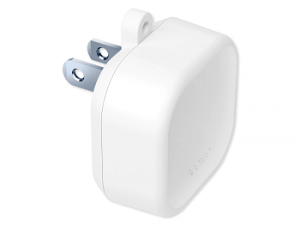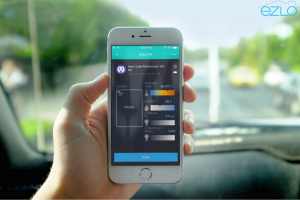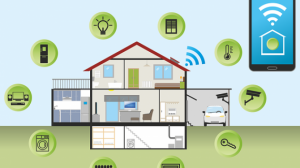5 Things You Should be Aware of Before Building a Smart Home
- March 31, 2022
- by Ezlo Admin
Here are a few key ideas that, I believe, everyone who’s new to smart home technologies should know.
I love the idea of a smart home and all the technologies appearing every day, but I often see that people do not clearly understand what it actually means and how to make the best use of it. So here are a few key ideas that, I believe, everyone who’s new to smart home technologies should know.

1. Not all electronically advanced devices are actually ‘smart’ yet.
What devices are classified as ‘smart’? Usually, its bulbs, plugs, sensors, door bells, etc. Their functionality allows setting them to perform specific scenarios or be controlled via a smartphone.
Thus, you can use a set of the above-mentioned devices to let your home get heated up right before you arrive from your work, or turn on the music and lights in the morning once you wake up. In the end, you do less to enjoy your life more.
So a ‘smart’ device allows you to automate your routine, let you control it via your phone and help you avoid doing some usual physical actions like finding the light switch at night or setting the thermostat even if you’re far away.
However, that’s not the case with most kitchen appliances. For instance, you may have already heard about the so-called ‘smart’ fridges or ovens. While they can help you order food supplies online or simplify some cooking processes, they will never put the food on the shelves or cook it for you.
Also, as of 2017, you still can’t make your kitchen appliances a part of your smart home infrastructure and teach them to perform scenarios involving few devices (for instance, a motion sensor could turn on your dishwasher when you go to sleep after 9pm). So while they might provide additional functionality, they can’t yet be called ‘smart’.
In the future, with technologies constantly evolving, the situation can change, however.
2. Make sure your phone is protected
Most smart devices now allow being controlled with your smartphone. You can get the data about humidity and CO2 levels at your home from internet-enabled sensors, change the color of the bulb or teach your thermostat to variate the desired temperature throughout the day.
Thus, your smartphone becomes one of the keys to your home and home network, and since you carry it everywhere, it’s great to make sure you keep it safe and protected from any culprits. Here are a couple things I believe you should consider:
a. Backups
Sometimes our phones get broken, lost or stolen, and the best way to make the transition to a new phone seamless is to make advantage of your backups. Thus, make backups of your contacts, app settings etc regularly. All mobile operating systems provide plenty of built in and third-party tools for backing up your data, so it’s not a problem nowadays.
b. Strengthen your passwords.
Make sure to use various symbols, uppercase and lowercase letters and numbers whenever possible. If you have a lock-screen pattern or an access code, make it harder for strangers close to you in the crowd or transport to remember it.
c. Know your data.
Learn what kind of data you store on your phone and if you want to have it additionally secured encrypted from third-parties. For instance, imagine an evil-doer got access to your phone. Will they be able to recover GPS data from your photos and find out where you live? Or discover the videos you would not want to get public that can be used to blackmail you?
d. Install updates.
Install OS and app updates as soon as they are released to make your phone is up-to-date in terms and don’t have any well-known security holes.
e. Use anti-malware software.
Anti-malware software helps you to avoid installing and using applications that get your personal data, overload your phone with advertisements and make it a part of a botnet.
f. Avoid open (password-free) public WiFi networks.
Don’t enter sensitive data (like passwords) when using public Wi-Fi networks. Such networks are usually purely secured and can cause data leaking that you might not even notice.
I once used a public WiFi to access my Gmail account via my laptop, and later I’ve got notified that somebody accessed it from the other end of the world, so I immediately changed my password. Who knows what would happen if I didn’t do it.
3. Smart doesn’t always mean secure.
According to many surveys, no less than a half of people don’t want to ‘smartify’ their homes due to security concerns. If you share such anxiety, you can dive deeper into the peculiarities of the technology and make sure the device of your choice takes enough protection measures.
In general, two things should be checked in most cases:
- check if there are any discussions about your preferred device’s security issues on the Internet
- check how securely the device connects to other devices (like a hub or your phone) and how it stores the collected data. If it doesn’t use encryption, you better look for an alternative.
4. New doesn’t always mean better for you.
Sometimes, when you hear about new smart devices, marketers will do their best to make you want it.
Another cutting-edge smart lock might be declared to be so handy, so reliable, so protected. Yet what happens if the batteries run out of power, or if the sensor is broken or the phone you’ll use to open the door gets lost? You might, for instance, decide that it’d be great if a smart lock would still allow opening itself via a good old physical key. Yet not all new smart locks provide such an option.
Or think about a smart doorbell. If you place it outside of your house, will it be able to function properly at all times considering your climate? Another thing to consider is whether you want it to function via battery cells or you can power it with your electric cable.
Long story short, if you hear about the new great device, think first how it fits your specific needs, not how you can make the best use of its always-limited functionality
5. Make your life simpler, not just more technologically advanced.
I love smart home devices, but I understand the primary goal of any technology is to help you cope with your problems, not multiply them. Still, many of us often feel frustrated when the technologies we are relying on don’t work or work not the way we expected.
Once I missed an email about canceling a meeting when I had already traveled to the other end of the city. Another time, I was unable to load an e-ticket on my phone to get on the plane.
While the smart home technologies are great in making life easier, they still might not be so intuitive for using. For instance, smart bulbs require you to never turn them off via a wall switch (otherwise, you’ll be unable to turn on and manage them via WiFi). A smart backpack with a Li-Ion battery in it can cause troubles in the airport as well.
In the end, while the Internet of Things industry is full of forward looking technologies and devices that you might want to get your hands on as soon as possible, making your home smart is first about rationally meeting your personal goals of making your home life easier, while ensuring a high level of security. As long you as you’re sure about keeping these two things in mind, your smart home will continue to simplify your life, rather than complicate it. Good luck!




